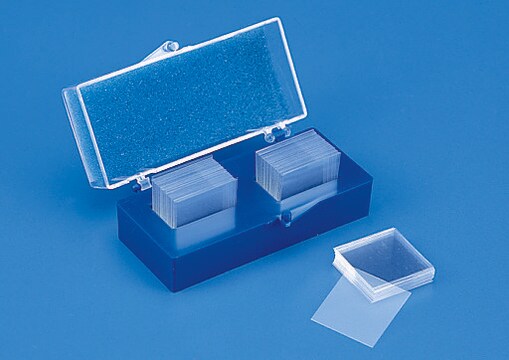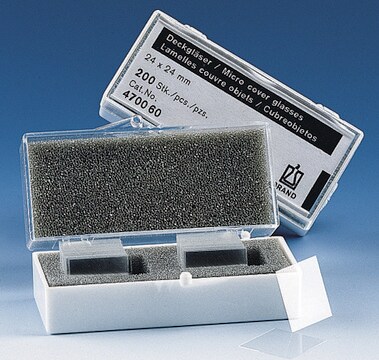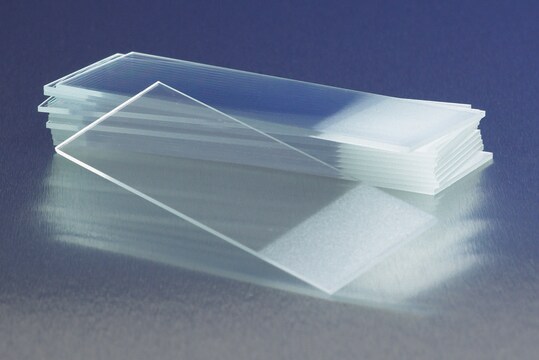643254
Goldbeschichtete Glasabdeckfolie
99.999% (Au), layer thickness 100 Å, L × W × thickness 22 mm × 22 mm × 130-170 μm, square
About This Item
Empfohlene Produkte
Qualitätsniveau
Assay
99.99% (Ti)
99.999% (Au)
L × B × Dicke
22 mm × 22 mm × 130-170 μm, square
Schichtdicke
100 Å
Brechungsindex
n20/587 1.523
Matrixanbindung
Titanium, as adhesion layer used to bind the gold to the borosilicate glass cover slip
SMILES String
[Au]
InChI
1S/Au
InChIKey
PCHJSUWPFVWCPO-UHFFFAOYSA-N
Suchen Sie nach ähnlichen Produkten? Aufrufen Leitfaden zum Produktvergleich
Verwandte Kategorien
Leistungsmerkmale und Vorteile
Sonstige Hinweise
Rechtliche Hinweise
Lagerklassenschlüssel
13 - Non Combustible Solids
WGK
nwg
Flammpunkt (°F)
Not applicable
Flammpunkt (°C)
Not applicable
Hier finden Sie alle aktuellen Versionen:
Besitzen Sie dieses Produkt bereits?
In der Dokumentenbibliothek finden Sie die Dokumentation zu den Produkten, die Sie kürzlich erworben haben.
Kunden haben sich ebenfalls angesehen
Artikel
1-Adamantanethiol (1-AD), an example in this spectrum of molecules with distinct chemical and physical properties, forms self-assembled monolayers (SAMs) on Au{111} that are displaceable when exposed to other thiolated molecules from solution, vapor, or contact due to weak intermolecular interactions in 1-AD SAMs.
Unser Team von Wissenschaftlern verfügt über Erfahrung in allen Forschungsbereichen einschließlich Life Science, Materialwissenschaften, chemischer Synthese, Chromatographie, Analytik und vielen mehr..
Setzen Sie sich mit dem technischen Dienst in Verbindung.








